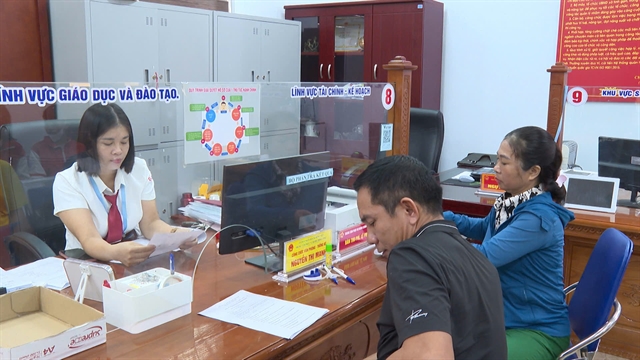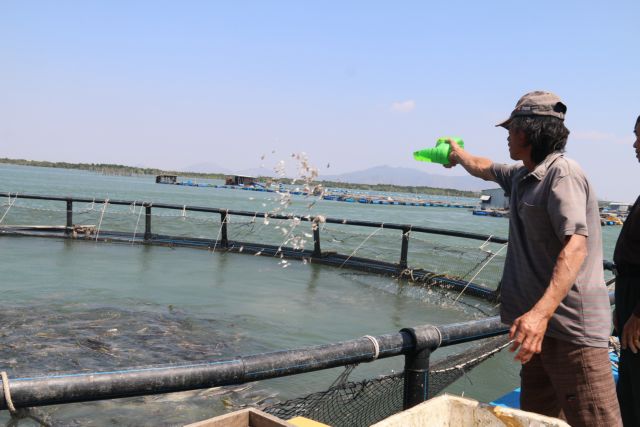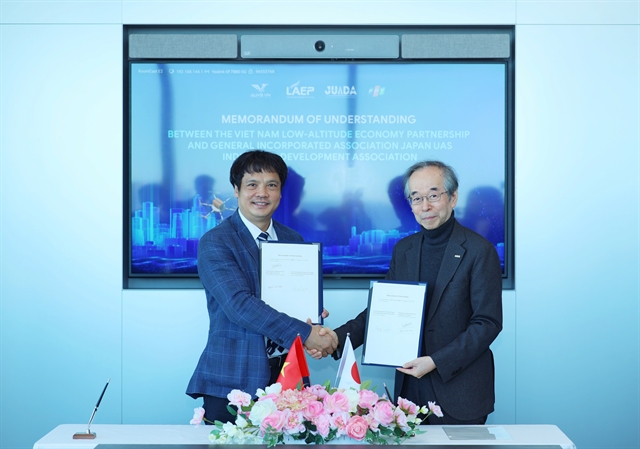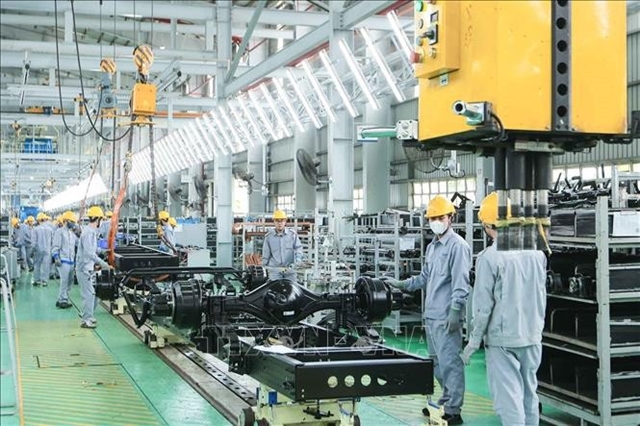 Society
Society


|
| High-density polyethylene (HDPE) floating cages are used to breed fish in southern Bà Rịa-Vũng Tàu Province’s Long Sơn Commune. — VNA/VNS Photo Hoàng Nhị |
HÀ NỘI —
The country has great potential for mariculture thanks to its long coastline, relatively large Exclusive Economic Zone (EEZ) and diverse water bodies embracing lagoons and bays, according to experts.
Ocean aquaculture has become a global trend
The world population keeps growing, leading to increasing consumer demand for seafood, according to the Food and Agriculture Organisation of the United Nations (FAO).
An estimated additional 19 million tonnes of seafood
Chairman of the Vietnam
Cultivation of seaweed at sea can help feed the growing world population as proteins from seaweed can
The growth of seaweed at sea can reach 400kg of protein per hectare per year while plants can only get 16kg of proteins per hectares per year,
Also, seaweed growth does not need fertilisers and plant protection chemicals while helping to absorb environmental pollutants in the atmosphere and at sea, he said.
With a coastline of over 3,260km and
The national strategy for sustainable mariculture development by 2030 states that
There are
Experts also warned that Việt Nam has huge potential for mariculture but challenges remain due to the lack of national seaculture development plans and preferential policies to draw investment from the business community.
Weak State management, out-dated technology and environmental pollution risks are also challenges facing the industry.
There is also a shortage of maritime production chains from mariculture farms to businesses providing food, breeding varieties and processing and distribution services.
To help develop mariculture sustainably, experts from the Vietnam Mariculture Association said it is necessary to build related mechanisms, policies and infrastructure to encourage businesses to join the industry.
Applying modern technology in mariculture as well as in preserving, transporting and processing seafood would also help to increase the products’ economic value.
Human resources training and international cooperation promotion are also needed.
The association has proposed the Government to build a national industrial mariculture development target programme by 2030 with a policy framework to encourage the participation of more businesses in mariculture.
Under the strategy for sustainable mariculture development, Việt Nam targets to reach 600,000 tonnes of marine farmed fish, 100,000 tonnes of seaweed and 100,000 tonnes of molluscs. Seafood export turnover is expected to reach $20-25 billion by 2030. — VNS




